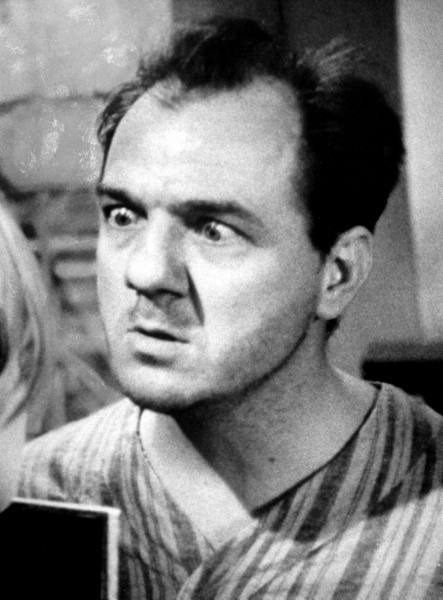Carroll Baker in
Baby Doll (1956) – Elia Kazan [amazon.com]
image sourced here.
Karl Malden is personally best-remembered for his portrayal of vulnerable and gullible chumps. The epitome of the weak character is the naive cuckold in Baby Doll.
Baby Doll is a 1956 film which tells the story of the childlike bride of a Mississippi cotton gin owner, who becomes the pawn in a battle between her husband and his enemy.
The movie was written by Tennessee Williams and was based on his one act play 27 Wagons Full of Cotton. It was directed by Elia Kazan.
The film is credited with both the name and originating the popularity of the babydoll nightgown, which derives from the costume worn by Baker’s character.
The Catholic Legion of Decency succeeded in having the film withdrawn from release in most U.S. theaters because of their objections over its sexual themes. The movie was banned in many countries like Sweden, due to its allegedly exaggerated sexual content. The film was also condemned by Time, which called it the “dirtiest American-made motion picture that had ever been legally exhibited”.
Baby Doll is World Cinema Classic #110
PS In one of my other favorite performances he plays a blind man in The Cat o’ Nine Tails (Dario Argento) in which he reminded me of the blind mother in Peeping Tom. There he is quite different from the chump stereotype.



![Stonewall riots @40[1] The Stonewall riots were a series of violent conflicts between New York City police officers and groups of gay and transgender people that began during the early morning of June 28, 1969, and lasted several days. Also called the Stonewall Rebellion or simply Stonewall, the clash was a watershed for the worldwide gay rights movement, as gay and transgender people had never before acted together in such large numbers to forcibly resist police. From the New York Times of June 29, 1969: HUNDREDS OF YOUNG MEN WENT ON A RAMPAGE IN GREENWICH VILLAGE, shortly after 3 A.M. yesterday after a force of plain-clothes men raided a bar that the police said was well known for its homo-sexual clientele. Thirteen persons were arrested and four policemen injured. The young men threw bricks, bottles, garbage, pennies and a parking meter at the policemen, who had a search warrant authorizing them in investigate reports that liquor was sold illegally at the bar, the Stonewall Inn, 53 Christopher Street, just off Sheridan Square.—New York Times, June 29, 1969[2] The Sanctuary epitomized the post-Stonewall era, when gay men had won the right to dance intimately together without worrying about the police.](http://22.media.tumblr.com/Y3KxdEiQup9bs39weHt9Eiebo1_400.gif)

